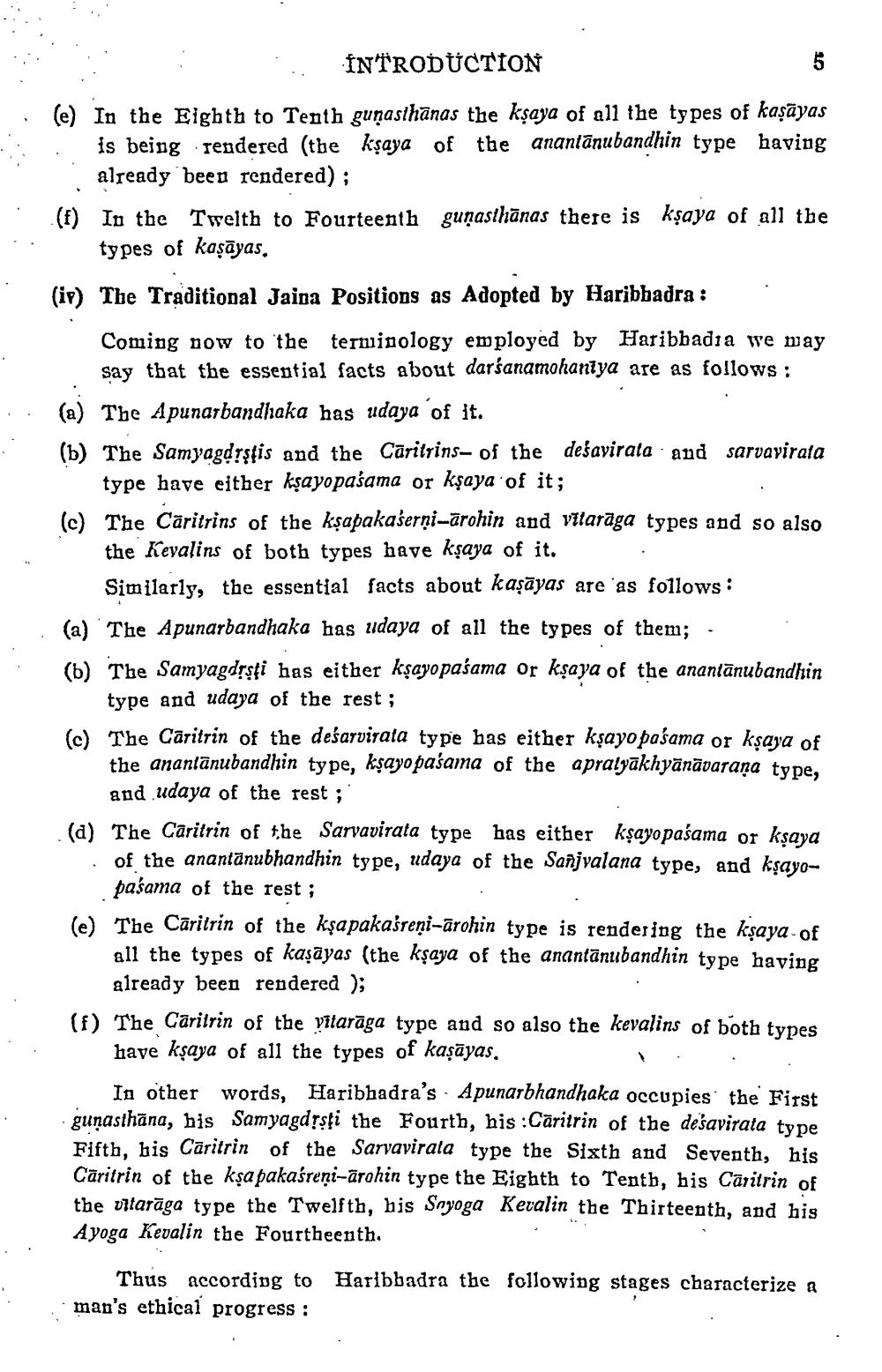________________
INTRODUCTION
5
(e) In the Eighth to Tenth guṇasthānas the kṣaya of all the types of kaşayas is being rendered (the kṣaya of the anantānubandhin type having already been rendered);
(f) In the Twelth to Fourteenth guṇasthānas there is kşaya of all the types of kasayas.
(iv) The Traditional Jaina Positions as Adopted by Haribhadra:
Coming now to the terminology employed by Haribhadra we may say that the essential facts about darśanamohaniya are as follows: (a) The Apunarbandhaka has udaya ́of it.
(b) The Samyagdrştis and the Caritrins- of the desavirata and sarvavirata type have either kṣayopasama or kşaya of it;
(c) The Caritrins of the kṣapakaserṇi-ārohin and vitarāga types and so also the Kevalins of both types have kṣaya of it.
Similarly, the essential facts about kaşayas are as follows:
(a) The Apunarbandhaka has udaya of all the types of them;
(b) The Samyagdṛṣṭi has either kṣayopaśama or kṣaya of the anantānubandhin type and udaya of the rest;
(c) The Caritrin of the deśarvirata type has either kṣayo pasama or kṣaya of the anantanubandhin type, kṣayo pasama of the apratyākhyānāvaraṇa type, and udaya of the rest;
(a) The Caritrin of the Sarvavirata type has either kṣayopasama or kṣaya of the anantanubhandhin type, udaya of the Sañjvalana type, and kṣayopasama of the rest;
(e) The Caritrin of the kşapakasreni-ārohin type is rendering the kṣaya of all the types of kasayas (the kṣaya of the anantänubandhin type having already been rendered );
(f) The Caritrin of the vitaraga type and so also the kevalins of both types have kṣaya of all the types of kaṣāyas.
In other words, Haribhadra's Apunarbhandhaka occupies the First gunasthana, his Samyagdṛsti the Fourth, his Caritrin of the desavirata type Fifth, his Caritrin of the Sarvavirata type the Sixth and Seventh, his Caritrin of the kṣapakasreni-ärohin type the Eighth to Tenth, his Caritrin of the vitaraga type the Twelfth, his Soyoga Kevalin the Thirteenth, and his Ayoga Kevalin the Fourtheenth.
Thus according to man's ethical progress :
Haribhadra the following stages characterize a




